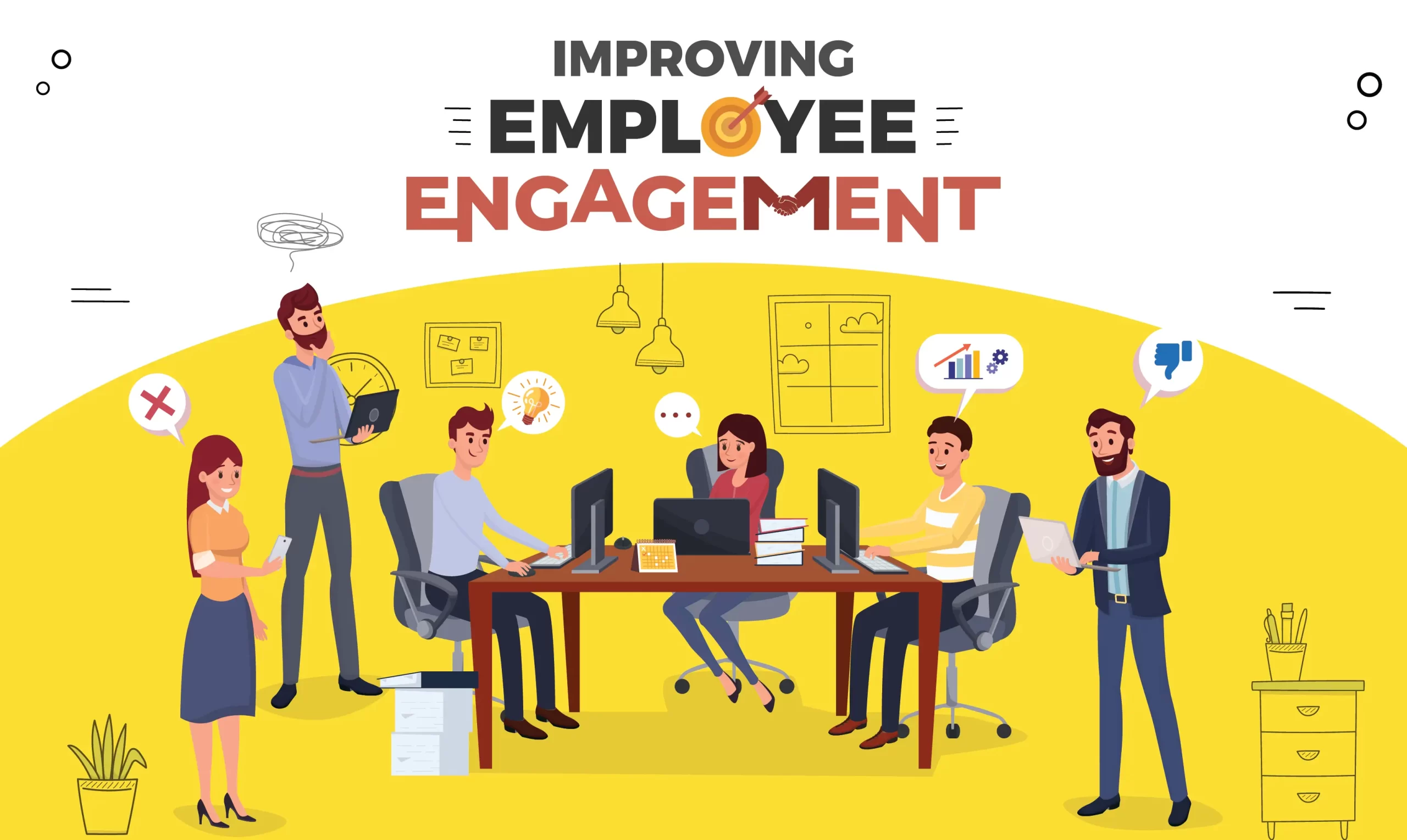

Improving employee engagement – a guide
What makes a workplace a place of work?
A workplace’s true essence doesn’t stem from its physical infrastructure, machinery, or luxurious amenities; it’s fundamentally defined by its workforce – its people. These individuals shape both the quality of the workplace and the prospects of the organization.
The more actively engaged these employees are, the more beneficial it is for the organization. In today’s knowledge-based economy, corporate leaders have acknowledged that they must extend their efforts beyond merely recruiting and hiring, and instead, focus on the entire employee lifecycle. They grasp the significance of identifying effective employee engagement strategies to optimize their investment in human asset and transform them into high-return assets for the business.
Implementing successful employee engagement initiatives empowers workers to not only enhance their performance but also to deliver distinct advantages to the organization. These benefits manifest as increased profitability, improved customer retention, enhanced talent acquisition and retention, reduced employee turnover, and a safer working environment. Consequently, this contributes positively to the bottom line in each quarter and guarantees the organization’s sustained prosperity in the long run.
This leads us to the fundamental question: “What exactly is employee engagement?” While it may sound straightforward, it carries profound implications. To begin, let’s clarify what it isn’t. Employee engagement is not a strategy. The term “strategy” typically implies achieving desired results through tactical maneuvers. However, what an effective employee engagement strategy fundamentally accomplishes is increasing the probability of fostering a positive relationship between the employee and the organization.
“Employee engagement is the emotional connection or commitment that an employee has to the organization that then causes the employee to want to put forth the additional effort to ensure the organization and the brand succeed.”
– Annette Franz
We will focus on the essential measures necessary to ensure that employees establish a positive emotional connection with the organization and, most importantly, with the tasks they are assigned:
- Physical Engagement: This dimension relates to the energy and effort employees invest in their work. The complexity of the tasks aligns with the specialized skill sets of the employees.
- Emotional Engagement: Here, employees grasp the significance of their roles and wholeheartedly commit to their tasks. They find challenge and inspiration in their work and experience a sense of accomplishment upon completion.
- Cognitive Engagement: Employees become deeply absorbed in their work, entering a state of flow where they are fully engrossed and highly productive.
Improving employee engagement is a vital goal for any organization, as it directly impacts productivity, job satisfaction, and overall success. Here are some key strategies that companies can employ to enhance employee engagement:
Embrace a Bottom-Up Approach
Just as a house requires a solid foundation, organizational decisions should begin at the grassroots level – with your employees. Implement questionnaires and surveys that provide employees with a platform to voice their thoughts and concerns. Studies indicate that 1 in 6 employees is actively seeking new job opportunities, making surveys a potent tool for kickstarting your employee engagement strategy. The more you seek their input, the more valued and included they’ll feel within the organization.
Foster Two-Way Communication
Effective employee engagement hinges on keeping employees well-informed. When organizations operate in secrecy, only divulging information on a “need-to-know” basis, it can erode employee engagement. Transparency builds trust as employees gain insight into how corporate decisions impact the workplace and learn how to address various situations.
However, mere information dissemination is insufficient. Communication must be bidirectional; employees should be encouraged to voice their concerns, ensuring they don’t feel neglected or undervalued. Prominent business leaders often endorse an open-door policy and refrain from exploiting “top-secret” information for their benefit.
Promote Community Involvement
An organization functions as a collective community, with each member contributing to the overall success. Encouraging a sense of community among employees can be achieved through various engagement activities, from hosting annual events to simple team lunches.
Irrespective of the organizational hierarchy, maintaining a level of equality and fairness where everyone feels essential to the community is key. This approach aligns with the ethos of contemporary tech startups that embrace a more informal, open organizational structure. While sustaining this model may present challenges, it has the potential to cultivate highly engaged staff.
Prioritize Personal Development
This strategy falls under the nurturing aspect of human asset management. Every individual within your workforce should be nurtured and honed to contribute to the organization’s long-term growth. By implementing in-house training programs or sponsoring higher education for your employees, you invest not only in your company’s future but also foster loyalty among your workforce.
It’s essential to recognize that employees appreciate companies that support their professional growth and add value to their personal lives. To retain top-tier talent, prioritize their personal development, and the rewards will follow.
Create a Sense of Purpose
Employees are not mere machines; they are human beings. Organizations that view their employees as commodities rather than potential advocates of their values miss the essence of human asset. While competitive compensation matters, fostering an emotional connection between employees and the brand encourages greater commitment and contribution. A key method to achieve this is by communicating the significance of employees’ roles in achieving the organization’s business goals. In essence, organizations should prioritize making their employees feel valued and integral.
In conclusion, employee engagement is the linchpin of a thriving workplace, and organizations must prioritize it through strategies that foster involvement, transparency, and a strong sense of community among their workforce.



